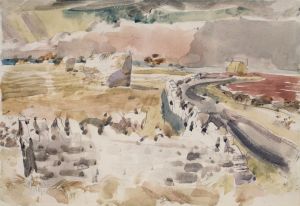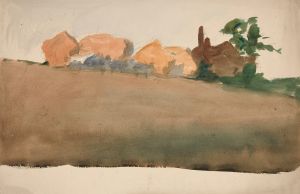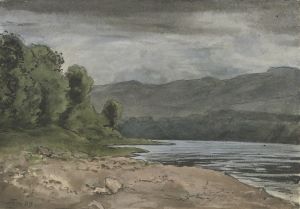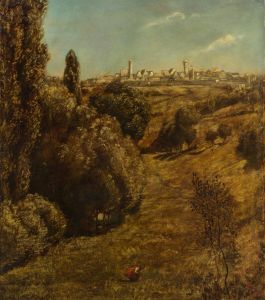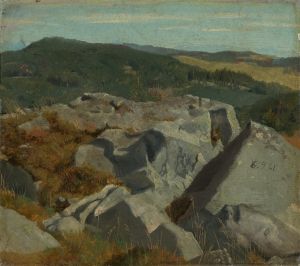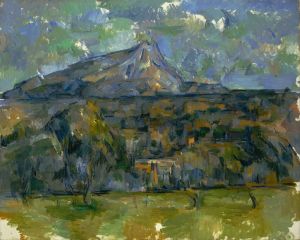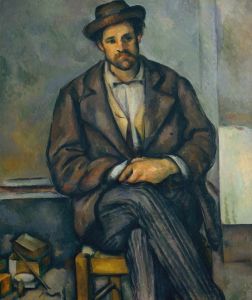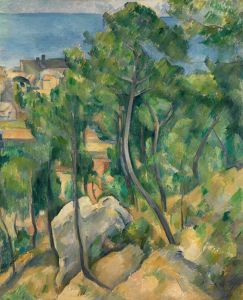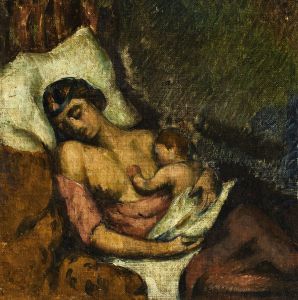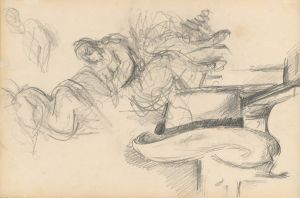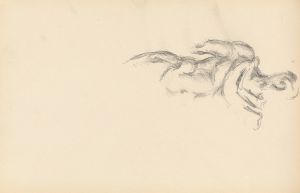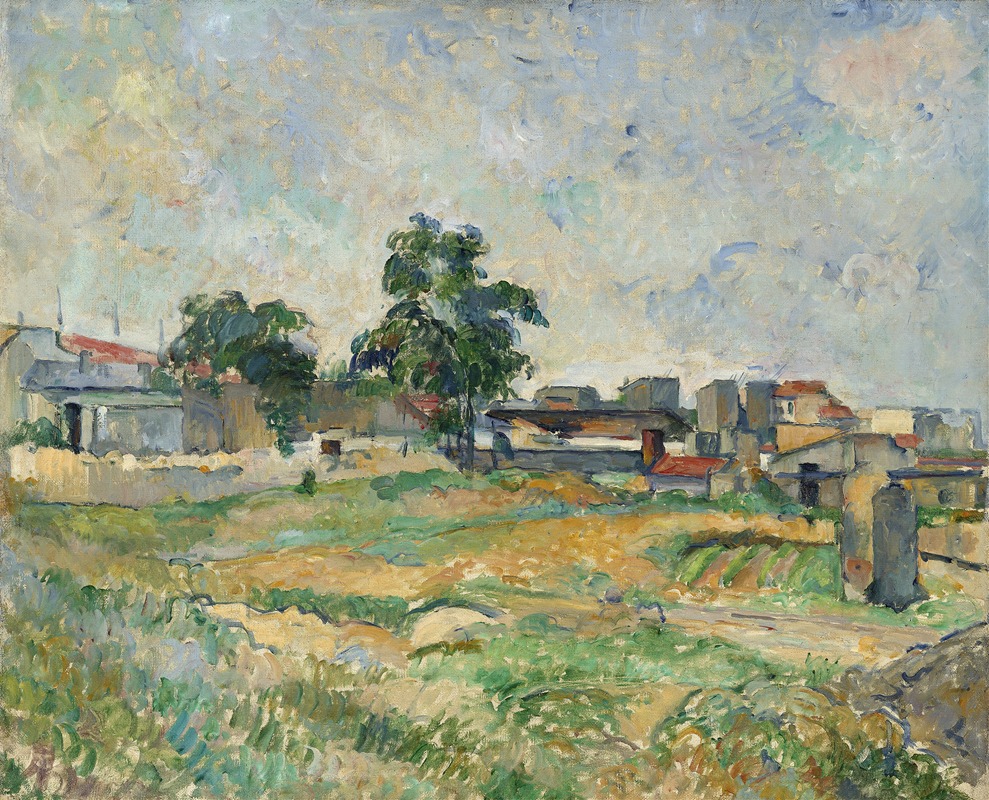
Landscape near Paris
A hand-painted replica of Paul Cézanne’s masterpiece Landscape near Paris, meticulously crafted by professional artists to capture the true essence of the original. Each piece is created with museum-quality canvas and rare mineral pigments, carefully painted by experienced artists with delicate brushstrokes and rich, layered colors to perfectly recreate the texture of the original artwork. Unlike machine-printed reproductions, this hand-painted version brings the painting to life, infused with the artist’s emotions and skill in every stroke. Whether for personal collection or home decoration, it instantly elevates the artistic atmosphere of any space.
"Landscape near Paris" is an oil painting by the renowned French artist Paul Cézanne, created around the late 19th century. Cézanne, a pivotal figure in the transition from 19th-century Impressionism to 20th-century Cubism, is celebrated for his innovative approach to form and color, which laid the groundwork for the modern art movement.
This particular painting, "Landscape near Paris," exemplifies Cézanne's distinctive style, characterized by his methodical brushstrokes and the use of color to construct form and depth. Cézanne's landscapes often reflect his interest in capturing the essence of nature through a harmonious arrangement of shapes and colors, rather than focusing on the transient effects of light and atmosphere that were the hallmark of Impressionism.
The painting depicts a serene view of the countryside near Paris, showcasing Cézanne's ability to convey the solidity and structure of the landscape. His approach to this subject matter is marked by a deliberate composition, where the natural elements are organized into a cohesive whole. The use of color is particularly noteworthy, as Cézanne employs a palette that balances warm and cool tones, creating a sense of depth and volume. This technique highlights his departure from the Impressionist focus on fleeting moments, instead emphasizing the enduring qualities of the natural world.
Cézanne's landscapes are often seen as a bridge between Impressionism and the emerging modernist movements. His work influenced a generation of artists, including Pablo Picasso and Georges Braque, who would later develop Cubism. Cézanne's emphasis on the underlying structure of natural forms and his exploration of geometric simplification were revolutionary, challenging traditional perspectives and paving the way for new artistic expressions.
"Landscape near Paris" is a testament to Cézanne's mastery of composition and his innovative use of color and form. The painting reflects his dedication to capturing the timeless qualities of nature, moving beyond the surface to explore the fundamental structures that underpin the visible world. Cézanne's work continues to be celebrated for its profound impact on the development of modern art, and "Landscape near Paris" remains an important example of his contribution to the evolution of painting.
While specific details about the painting's provenance or its current location may not be widely documented, its significance lies in its representation of Cézanne's artistic vision and his role in shaping the trajectory of modern art. Through works like "Landscape near Paris," Cézanne's legacy endures, inspiring artists and art enthusiasts alike to appreciate the beauty and complexity of the natural world through a fresh lens.






